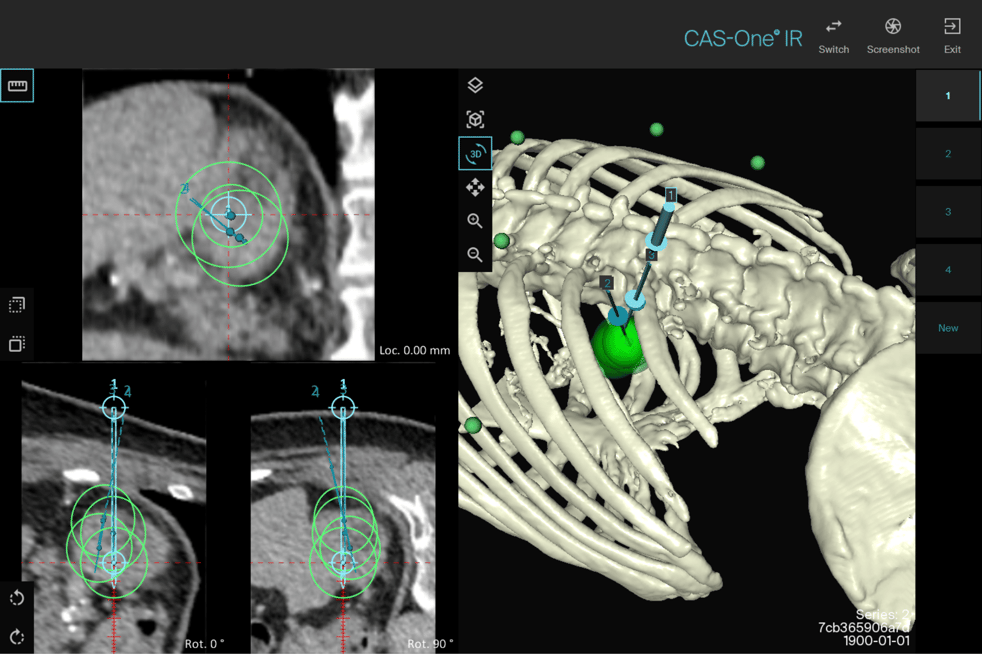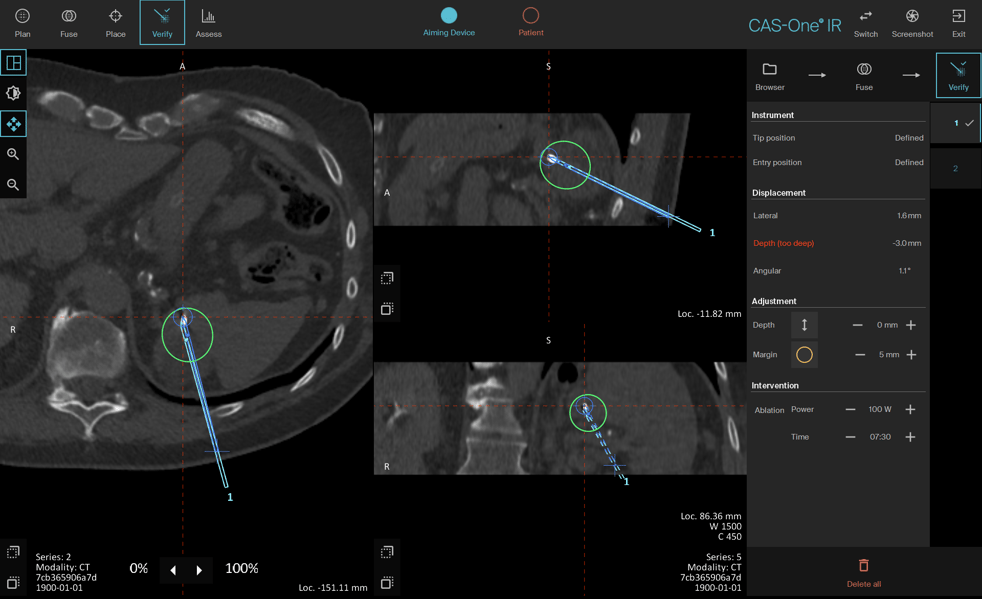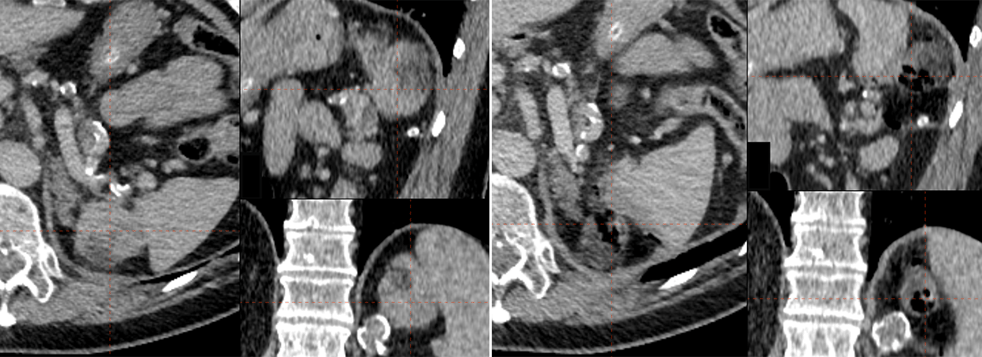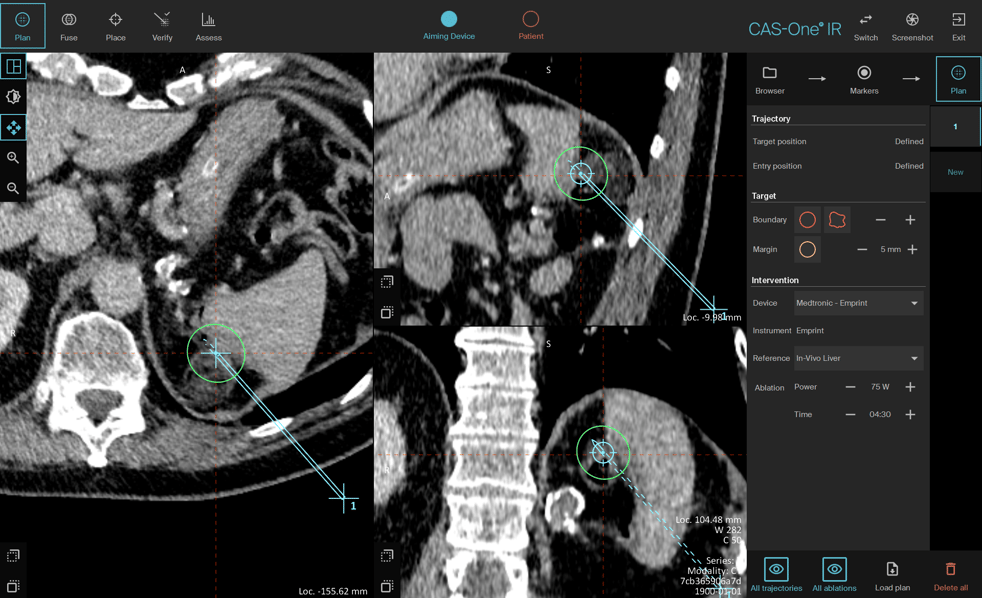RCC pull-back microwave ablation with two trajectories and four ablation zones
Complex microwave ablation in a renal cell carcinoma patient previously treated with a surgery. Patient treated with left nephrectomy for renal cell carcinoma in 2004. In 2021 a biopsy confirmed a progressively growing local recurrence. Patient was referred to the interventional radiology department. First, an radiofrequency to reduce the size of the lesion was performed, followed four months later by a pull-back microwave ablation with two trajectories and four ablation zones to cover the entire tumour volume. An immediate re-ablation to ensure all residual mass has been destroyed completed the treatment.

Planning scan showing the two trajectories and four overlapping ablation zones

First needle verification scan

Side by side comparison of pre ablation image on the left and post-ablation image on the right

Planning of re-ablation
Name: Dr. Levent Kara
Institution: Stadtspital Zürich Triemli, Zürich (Switzerland)
Patient age and sex: 77 years, male
Initial condition:
- Patient was first diagnosed with a clear cell renal cell carcinoma pT1a cN0 cM0 on the left side in 2004
- Open surgery with complete left nephrectomy shortly afterwards
- Biopsy confirmed a progressively growing local recurrence in 2021
- In September 2021 the patient was referred to interventional radiology and treated with CAS-One IR guided RFA with the goal of the treatment to reduce the size of the lesion
- In January 2022 the entire lesion was treated with CAS-One IR guided MWA with a total of 5 (overlapping) ablation zones
Treatment:
- Patient in prone position, intercostal, oblique access was chosen
- 2 trajectories, with a pulled back ablation for a total of 4 ablation zones was planned
- After the post-ablation scan, an additional ablation zone was planned to be absolutely sure to have no residual mass
Conclusion:
- CAS-One IR allowed planning of overlapping ablation zones to achieve an ablation volume big enough to cover the entire tumour volume with its atypical shape
- A suspicious looking potential underablated area was re-ablated immediately in the same session and full coverage of the tumour volume was achieved
- 3 month follow-up CT-scan showed slight decrease in volume of the lesion that is now in a liquid state
- Patient remains under frequent surveillance
- For this case microwave ablation showed to be significant more effective than RFA
Learn more about the stereotactic navigation system CAS-One IR.


